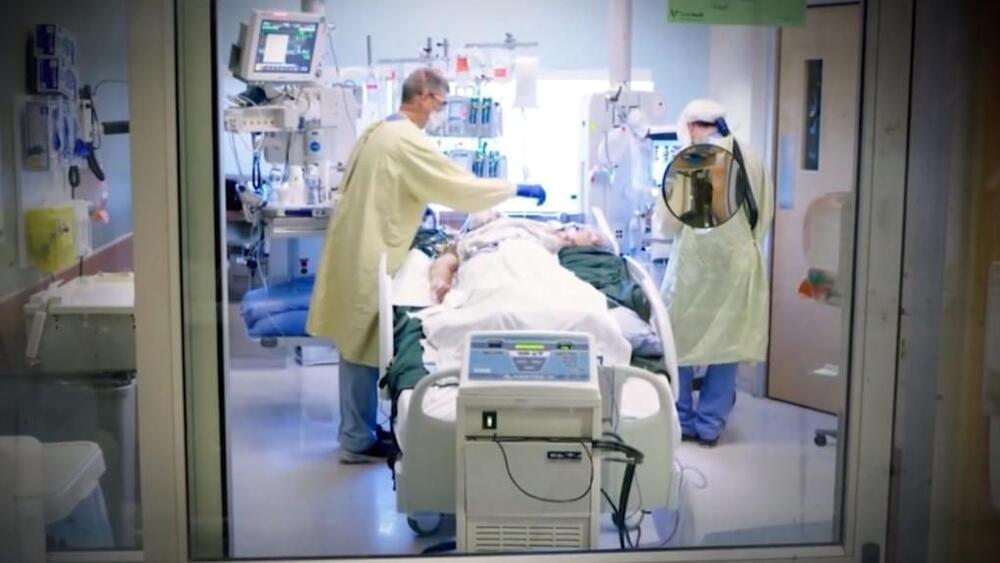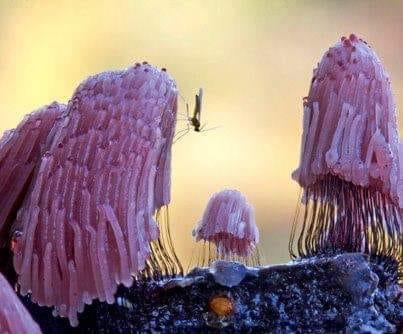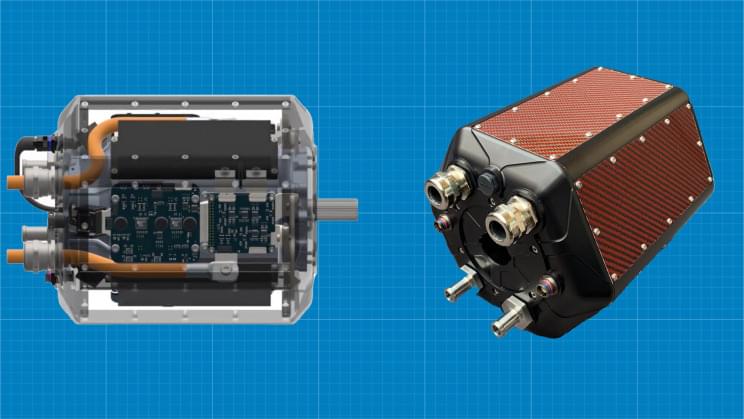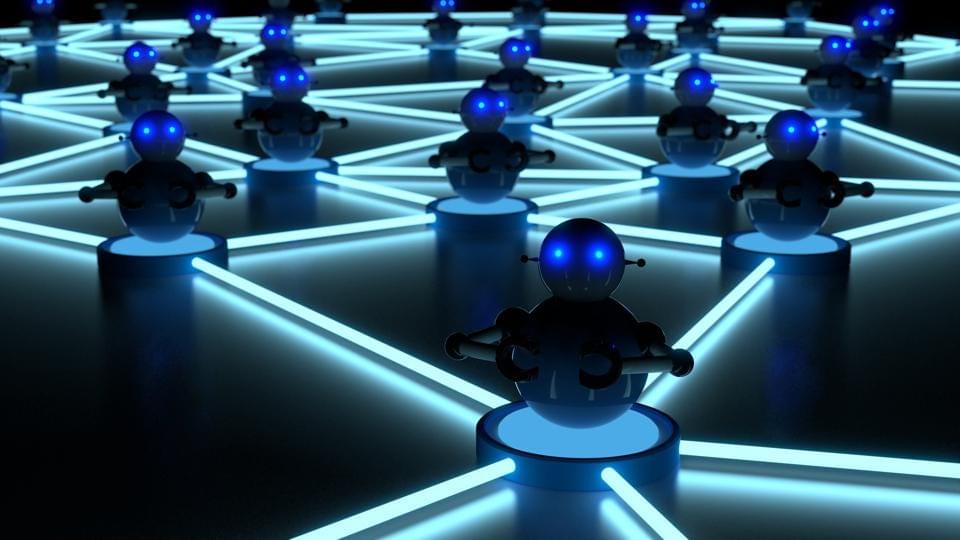Saturday on W5: experts warn the next pandemic could come sooner than you think, and that unless changes are made to industrial farming practices worldwide, it could spark a virus more deadly than COVID-19.



Barely-alive creatures, such as the slime mold pictured, are able to produce “memories” — they just store them in their physical surroundings rather than a brain. “A slime mould is not a fungus or mould, but is in fact a protist, which is really the odds and ends of the natural world that don’t fit in with the rest of our taxonomic grouping system,” said PhD student Christopher Reid who led the study.
Is it possible to know where you’ve been when you don’t have a brain? Depending on your definition of “know,” the answer may be yes. Researchers have shown that the slime mold, an organism without anything that resembles a nervous system (or, for that matter, individual cells), is capable of impressive feats of navigation. It can even link food sources in optimally spaced networks. Now, researchers have shown it’s capable of filling its environment with indications of where it has already searched for food, allowing it to “remember” its past efforts and focus its attention on routes it hasn’t explored.

Visible light is extremely important in nature. Seen by the human eye, it is the most intense light emitted by the sun to reach the earth’s surface and is an essential element for fundamental biological processes underlying life. However, it is difficult to generate coherent visible light, like the light of a laser, that is intense for a short amount of time, in the order of the femtosecond.
A research team, directed by Professor Luca Razzari of the Institut national de la recherche scientifique (INRS), has successfully achieved this goal without using a complicated system. The results of their work were recently published in Nature Photonics.

𝙈𝙍𝙄 𝙖𝙣𝙙 𝙐𝙡𝙩𝙧𝙖𝙨𝙤𝙪𝙣𝙙 𝘾𝙖𝙣 𝙎𝙣𝙚𝙖𝙠 𝘾𝙖𝙣𝙘𝙚𝙧 𝘿𝙧𝙪𝙜𝙨 𝙞𝙣𝙩𝙤 𝙩𝙝𝙚 𝘽𝙧𝙖𝙞𝙣 𝙍𝙚𝙨𝙚𝙖𝙧𝙘𝙝𝙚𝙧𝙨 𝙝𝙖𝙫𝙚 𝙙𝙚𝙫𝙚𝙡𝙤𝙥𝙚𝙙 𝙖 𝙩𝙚𝙘𝙝𝙣𝙞𝙦𝙪𝙚 𝙩𝙤 𝙜𝙚𝙩 𝙩𝙧𝙚𝙖𝙩𝙢𝙚𝙣𝙩𝙨 𝙩𝙝𝙧𝙤𝙪𝙜𝙝 𝙩𝙝𝙚 𝙥𝙧𝙤𝙩𝙚𝙘𝙩𝙞𝙫𝙚 𝙗𝙡𝙤𝙤𝙙-𝙗𝙧𝙖𝙞𝙣 𝙗𝙖𝙧𝙧𝙞𝙚𝙧
𝐈𝐧 𝐚 𝐧𝐞𝐰 𝐬𝐭𝐮𝐝𝐲, 𝐫𝐞𝐬𝐞𝐚𝐫𝐜𝐡𝐞𝐫𝐬 t𝐞𝐦𝐩𝐨𝐫𝐚𝐫𝐢𝐥𝐲 𝐦𝐚𝐝𝐞 𝐭𝐡𝐞 𝐛𝐥𝐨𝐨𝐝-𝐛𝐫𝐚𝐢𝐧 𝐦𝐨𝐫𝐞 𝐩𝐞𝐫𝐦𝐞𝐚𝐛𝐥𝐞, 𝐚𝐥𝐥𝐨𝐰𝐢𝐧𝐠 𝐚 𝐦𝐨𝐧𝐨𝐜𝐥𝐨𝐧𝐚𝐥 𝐚𝐧𝐭𝐢𝐛𝐨𝐝𝐲 𝐭𝐨 𝐭𝐚𝐫𝐠𝐞𝐭 𝐜𝐚𝐧𝐜𝐞𝐫 𝐭𝐡𝐚𝐭 𝐡𝐚𝐝 𝐬𝐩𝐫𝐞𝐚𝐝 𝐭𝐨 𝐭𝐡𝐞 𝐛𝐫𝐚𝐢𝐧.
A new way to usher treatments through the protective blood-brain barrier.

The world’s largest semiconductor manufacturers—Intel, Samsung, and the Taiwan Semiconductor Manufacturing Company (TSMC)—have all announced plans to build new chip factories in the US. Everyone is bragging about those plans: American lawmakers say bringing chip manufacturing back onto US soil will strengthen national security, while the chip makers, chastened by this year’s disastrous semiconductor shortage, are diversifying their supply chains to avoid future crises.
But there’s one problem: Who will pay?
Intel, Samsung, and TSMC have all threatened to pull the plug on their US factory plans unless government subsidies are on the table. Company executives claim that if they don’t get a rich package of incentives and tax breaks, they’ll build their semiconductor factories elsewhere, effectively ending American ambitions to return chip manufacturing to its shores after ceding the bulk of the market to Taiwan in the 1990s.
This videoclip is an excerpt of a movie produced by CGTN America entitled “Gene Therapies and the Promise of the Fountain of Youth” which was released in January 2021.
He añadido S/T en Español.
Visit Our Parent Company EarthOne For Sustainable Living Made Simple ➤
https://earthone.io/
Progress has an accelerating rate of change due to the compounding effect of these technologies, in which they will enable countless more from 3D printing, autonomous vehicles, blockchain, batteries, remote surgeries, virtual and augmented reality, robotics – the list can go on and on.
These devices in turn will lead to mass changes in society from energy generation, monetary systems, space colonization and much more! All these topics and then some will be covered in videos of their own in the future.
In this video we will be discussing automation, which is often confused with being the ‘technological revolution’ in it of itself as it is what the mainstream focuses on, and for good reason, as how we handle automation will determine the trajectory or collective future takes.
00:00 Intro.
01:30 Progress Traps.
03:50 Automation.
11:51 Retraining.
13:55 The Gig Economy.
Thank you to the members who supported this video ➤

The founding team at H3X have a compelling origin story. The three friends — Jason Sylvestre, Max Liben, and Eric Maciolek — formed a bond as they participarted in an engineering course regarding electric vehicles.
After their careers led them in separate directions, with each finding work in the tech and auto industries, a Department of Energy grant brought them back together to ponder how they could improve electric motors.
Their first-principles mindset and efforts have borne fruit in the form of a new electric motor that can potentially power large commercial flights.

In the world of rampant data sharing, nefarious use of personal data and media manipulation, it is clear the lucrative ad tech market may not necessarily be ready for complete transformation. This post follows the introductory article entitled, Real-Time Bidding: The Ad Industry has Crossed a Very Serious Line. I had a chance to sit down with Dr. Augustine Fou, my collaborator on the article, and a seasoned marketer, who has “witnessed the entire arc of the evolution of digital marketing”. Dr. Fou currently helps marketers audit their digital campaigns for ad fraud and optimize campaigns based on accurate analytics.
Advertising has evolved tremendously in the last 20 years. The market for digital ads and the scale to which impressions are bought and sold across the ad exchanges has made the industry more efficient and more lucrative. Has advertising been truly transformed?
It seems insurmountable today. Digital consumption is rampant. Harms from misinformation to breaches to online bullying to manipulative targeting is spawning an environment of political and societal polarization, increased mental anxiety and even suicides. Without inadequate laws to regulate these digital services, the very rules and policies that have continued to govern the physical world are not able to keep pace with the speed of technology, and properly reflect what is happening in our digital spaces.
Can we have a future where creators of technology can build towards responsibility despite the constant allure of monetization and profits? I had a chance to speak to David Ryan Polgar, Founder & Director of the non-profit, All Tech Is Human (ATIH) to dive into discussing this critical juncture where heightened consumer awareness has the potential to drive a different story.